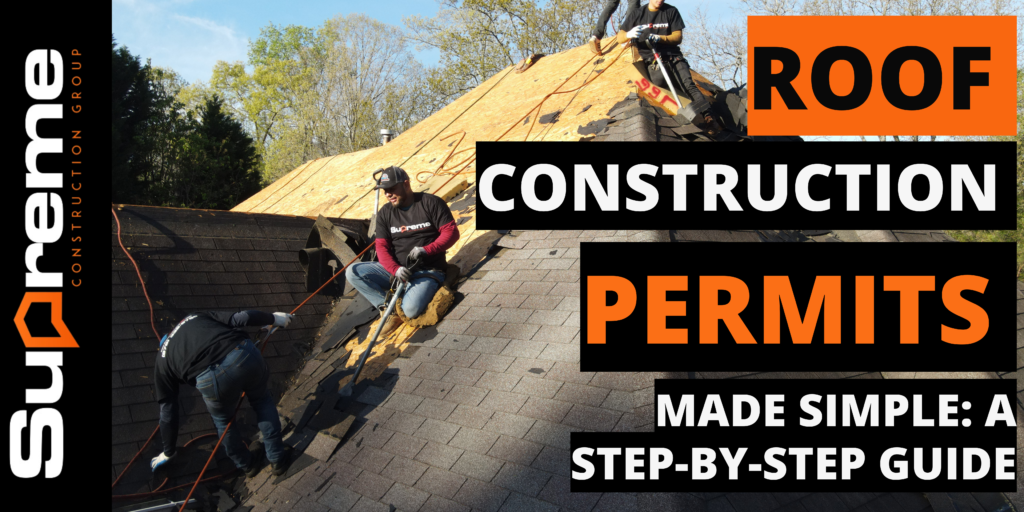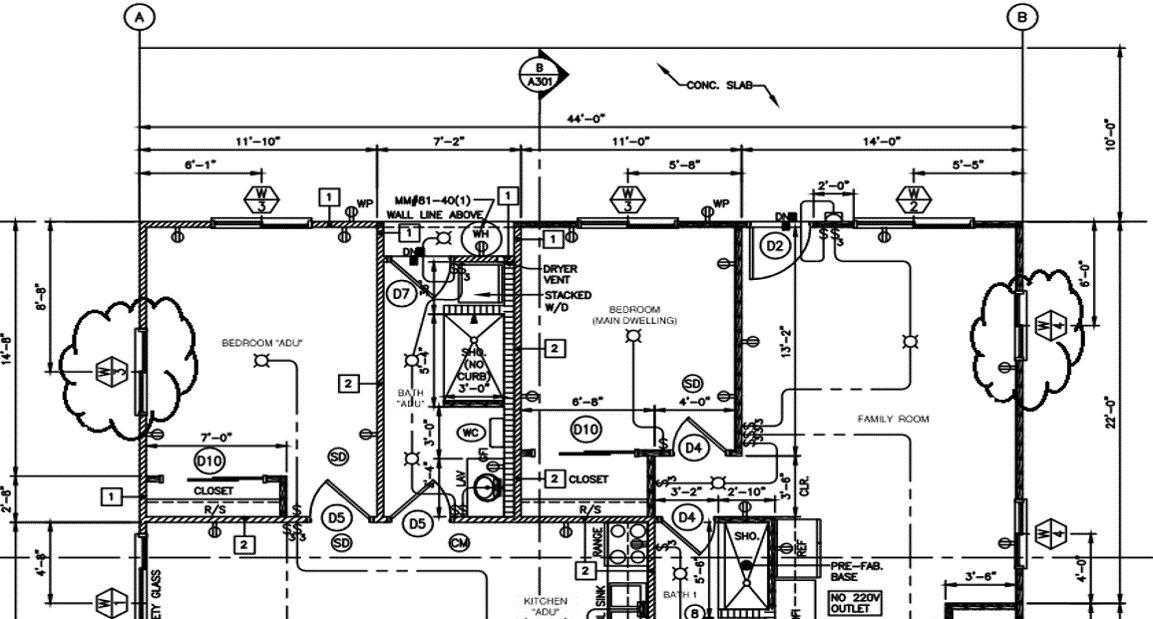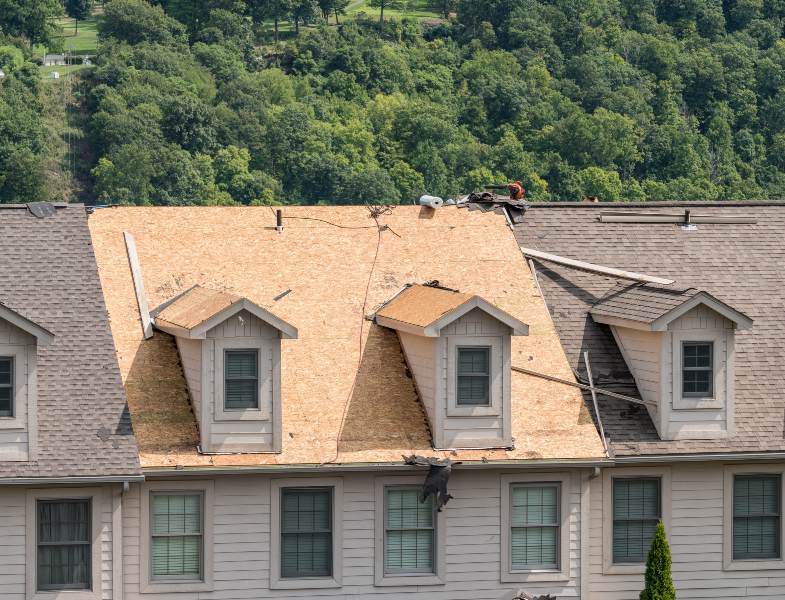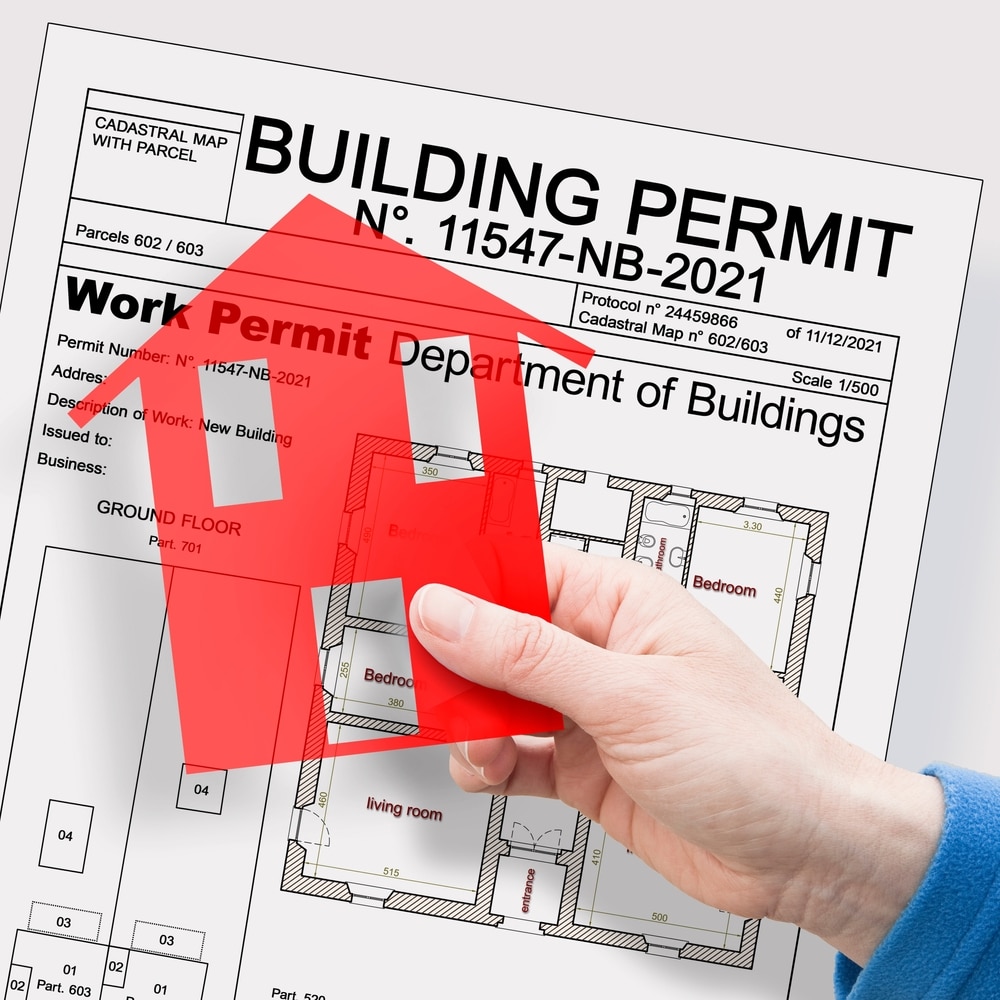Planning permission and building permits for rooftop extensions and modifications: dreaming of extra space? Adding a dormer window, a mansard roof, or even just a simple flat roof extension can dramatically change your home. But before you start envisioning those extra bedrooms or stunning city views, you need to navigate the sometimes-tricky world of planning permission and building regulations.
This guide breaks down everything you need to know, from understanding the differences between permits to navigating the application process and avoiding costly mistakes. Get ready to transform your roof – legally and stylishly!
This article dives deep into the legal and practical aspects of rooftop renovations. We’ll cover the various types of extensions, the specific permit requirements for each, and the potential impact on your property value. We’ll also guide you through the application process, highlighting potential challenges and offering solutions. Plus, we’ll address crucial building regulations, cost considerations, and the importance of minimizing environmental impact.
Ultimately, we aim to empower you with the knowledge to successfully complete your rooftop project.
Understanding Rooftop Extension Regulations

Navigating the world of rooftop extensions can feel like scaling a skyscraper without a safety harness. Understanding the legal requirements is crucial to avoid costly delays and potential project rejection. This guide clarifies the differences between planning permission and building permits, the application process, common pitfalls, and key requirements.
Planning Permission and Building Permits: Key Differences
Planning permission and building permits are distinct but interconnected processes. Planning permission addresses the impact of your extension on the surrounding environment and neighbourhood, focusing on aspects like design, size, and impact on neighbours’ views and sunlight. Building permits, on the other hand, concentrate on the structural safety and compliance with building codes of the extension itself. You’ll generally need both to legally construct a rooftop extension.
Failing to secure either can result in enforcement action, fines, and even demolition.
Stages in Obtaining Permissions
Securing both planning permission and a building permit involves several key stages. For planning permission, this typically begins with submitting a detailed application including architectural drawings, site plans, and a description of the proposed extension. Local authorities then assess the application against planning policies and regulations, potentially requiring further information or revisions. Once approved, you can proceed to obtain a building permit.
This process usually involves submitting detailed construction plans, specifications, and calculations demonstrating the structural integrity of the proposed work. Inspections may be carried out at various stages of construction to ensure compliance.
Reasons for Application Rejection
Applications for rooftop extensions are frequently rejected due to several factors. Common reasons include non-compliance with local planning policies (e.g., height restrictions, impact on neighbours’ amenities, or preservation of historical character), inadequate structural designs failing to meet building codes, insufficient information provided in the application, and failure to address concerns raised by neighbours or other stakeholders during the consultation process.
Before you even think about adding that dreamy rooftop garden, remember the crucial first step: securing planning permission and building permits for rooftop extensions and modifications. This process ensures your project is legal and safe. Consider incorporating green elements, as detailed in this guide on incorporating green elements into a rooftop landscape design for improved air quality , to boost your home’s eco-credentials.
Ultimately, proper permits pave the way for a stunning and legally sound rooftop transformation.
A poorly-prepared application, lacking detail or failing to address potential issues proactively, significantly increases the risk of rejection. For example, an application failing to demonstrate sufficient consideration of the impact on neighbours’ light and privacy is likely to be rejected. Similarly, plans that don’t adequately address potential structural issues related to the load-bearing capacity of the existing roof structure will also be flagged.
Comparison of Requirements
| Requirement | Planning Permission | Building Permit | Notes |
|---|---|---|---|
| Architectural Drawings | Required | Required | Detailed drawings showing the design and dimensions of the extension. |
| Structural Calculations | May be required | Required | Demonstrates the structural integrity and stability of the extension. |
| Site Survey | Required | May be required | Shows the location of the extension and its relationship to the existing building and surrounding properties. |
| Impact Assessment | Required (e.g., neighbours’ views, sunlight) | Not typically required | Assesses the potential impact of the extension on the surrounding environment. |
| Building Regulations Compliance | Addressed indirectly | Directly addressed | Ensures the extension meets building codes and safety standards. |
| Environmental Impact Assessment | May be required depending on the scale and location | Generally not required | Focuses on broader environmental concerns, particularly for larger projects. |
Types of Rooftop Extensions and Modifications
Planning permission and building regulations for rooftop extensions can seem daunting, but understanding the different types of extensions and modifications, along with their associated requirements, is key to a smooth process. This section breaks down the various options available, helping you navigate the complexities of rooftop development. Remember, always consult with a qualified architect and planning professional to ensure compliance with local regulations.
Dormer Windows
Dormer windows are a popular choice for extending living space while maintaining the existing roofline. These projecting structures add vertical space to the attic, creating usable rooms. Planning permission is usually required, especially if the dormer significantly alters the appearance of the property or impacts neighboring properties. Building regulations cover structural integrity, fire safety, and energy efficiency. The impact on property value is generally positive, adding extra living space and improving natural light.
However, the extent of the value increase depends on factors such as size, design, and overall property condition.
Mansard Roofs
Mansard roofs are characterized by their steep slopes on all four sides, allowing for significant attic conversion. They often require more extensive planning permission due to their substantial alteration of the roofline. Building regulations are stricter, encompassing structural calculations to handle the added weight and potential impact on the building’s foundation. A well-executed mansard roof can significantly boost property value, adding considerable living space and a distinctive architectural feature.
However, the cost of construction can be high, and the planning process might be more complex compared to simpler extensions.
Flat Roof Extensions
Flat roof extensions are a contemporary option, offering a clean, minimalist aesthetic. Planning permission is usually needed, especially if the extension increases the overall footprint of the building or alters its external appearance. Building regulations focus on waterproofing, drainage, and structural stability. The impact on property value depends on the quality of the design and execution; a poorly designed or constructed flat roof can negatively affect the property’s value.
Conversely, a well-integrated flat roof extension can create a stylish and valuable addition.
Common Rooftop Modifications and Permit Needs
Understanding the need for permits for common rooftop modifications is crucial to avoid potential legal issues. Many seemingly minor alterations require permission.
Before you even think about sunbathing on your dream rooftop deck, remember navigating the world of planning permission and building permits for rooftop extensions and modifications is crucial. Finding inspiration for your project? Check out these affordable rooftop deck design ideas for apartment buildings to get your creative juices flowing. Then, armed with your design, get those permits sorted – avoid costly delays and potential legal issues down the line!
- Rooflight Installation: Generally requires building regulations approval to ensure compliance with building codes and safety standards. Planning permission might be needed depending on the size and location of the rooflights and their impact on the building’s appearance.
- Roof Insulation Upgrades: While often not requiring planning permission, building regulations related to energy efficiency may apply, especially if the work involves structural changes.
- Chimney Removal or Alteration: Planning permission is usually required for any significant alteration or removal of a chimney, as it could impact the building’s appearance and the structural integrity of the roof.
- Solar Panel Installation: Planning permission may be required depending on the size and location of the solar panels and their impact on the property’s appearance. Building regulations will cover the safe and secure installation of the panels.
- Gutter and Downpipe Replacement: Generally does not require planning permission unless it significantly alters the building’s appearance. However, it might be subject to building regulations if it involves structural changes.
Navigating the Application Process: Planning Permission And Building Permits For Rooftop Extensions And Modifications

Securing planning permission and building permits for your rooftop extension can feel like navigating a complex maze. However, understanding the process and gathering the necessary documentation beforehand can significantly streamline the journey and minimize potential delays. This section breaks down the steps involved, highlighting key documents and potential hurdles along the way.
Submitting a Planning Permission Application
The planning permission application process typically begins with a pre-application consultation with your local planning authority. This allows you to discuss your plans informally, receive initial feedback, and potentially avoid costly revisions later. Following this, a formal application is submitted, usually online through a dedicated portal. The application must include detailed plans, specifications, and supporting documentation outlining the proposed extension’s impact on the surrounding area, including neighbours’ properties.
A thorough and well-prepared application significantly increases the likelihood of a swift approval. The application will be reviewed by the planning authority, and you may be required to attend a hearing or provide further information. The entire process can take several weeks or even months depending on the complexity of the project and the workload of the local authority.
Required Documents for Planning Permission and Building Permits
A comprehensive application requires a meticulous collection of documents. For planning permission, this typically includes detailed architectural plans showing the proposed extension’s dimensions, materials, and impact on existing structures. Site surveys, including topographical surveys, are also crucial. Environmental impact assessments might be needed depending on the project’s scale and location. For building permits, additional documents are required, such as structural calculations demonstrating the extension’s stability and compliance with building codes.
Detailed specifications of materials used, electrical and plumbing plans, and fire safety assessments are also essential. Failure to provide complete and accurate documentation can lead to significant delays or rejection of the application. Consider engaging a professional architect or planning consultant to ensure all necessary documentation is included and complies with regulations.
Obtaining Building Permits After Planning Permission
Once planning permission is granted, the next step is to obtain the necessary building permits. This typically involves submitting a separate application to the relevant building control authority, often a different department than the planning authority. The building permit application will require many of the same documents as the planning permission application, but with a greater focus on construction details and compliance with building codes and regulations.
This stage ensures the construction adheres to safety standards and building regulations. Inspections are often carried out at various stages of construction to verify compliance. The building permit application process is typically faster than the planning permission process, but still requires careful preparation and attention to detail.
Potential Challenges and Delays
Several factors can lead to challenges and delays in the application process. These include incomplete or inaccurate documentation, objections from neighbours, complex planning regulations specific to the location, and unforeseen issues discovered during site surveys. Unforeseen delays within the local authority due to staffing shortages or a high volume of applications are also possible. Addressing potential objections proactively, engaging with the planning and building authorities effectively, and ensuring thorough preparation are crucial in mitigating potential delays.
A well-prepared application, professional guidance, and proactive communication can significantly increase the chances of a smooth and efficient process.
Building Regulations and Compliance

Building a rooftop extension or making modifications requires strict adherence to building regulations. Ignoring these regulations can lead to costly fines, legal battles, and even the demolition of your project. Understanding these regulations is crucial for a smooth and successful project. This section Artikels key regulations, provides examples of their impact, highlights common violations, and offers a checklist for ensuring compliance.
Key Building Regulations for Rooftop Extensions
Several building regulations significantly impact rooftop extensions and modifications. These regulations vary depending on location, but common themes include structural integrity, fire safety, access, and energy efficiency. For example, regulations often dictate the maximum load a roof can bear, requiring structural calculations to ensure the extension doesn’t compromise the building’s stability. Fire safety regulations might necessitate specific materials, fire-resistant barriers, and escape routes.
Building codes also address adequate access to the extension, including safe stairs or ladders, and compliance with energy efficiency standards, often involving insulation requirements and energy-efficient windows.
Examples of Building Regulations Impacting Design and Construction
Building regulations directly influence design choices. For instance, regulations limiting the height of extensions might prevent the creation of a desired room size. Regulations concerning the load-bearing capacity of the existing structure could dictate the materials used in the construction of the extension, potentially increasing the cost. Furthermore, stipulations regarding insulation thickness impact the thermal performance of the extension, influencing the choice of insulation materials and the overall energy efficiency of the building.
Similarly, regulations concerning fire safety might necessitate the use of specific fire-resistant materials, impacting the aesthetic choices for the extension. Local planning authorities will provide specific details applicable to your area.
Common Building Code Violations and Consequences
Ignoring building regulations can have serious repercussions. The following table illustrates some common violations and their consequences.
| Violation | Consequence | Example | Prevention |
|---|---|---|---|
| Insufficient structural support | Structural failure, collapse | Using inadequate beams or supports for a heavy extension | Engage a structural engineer for design and calculations; use approved materials and construction methods. |
| Lack of fire safety measures | Fines, legal action, potential fire hazard | Failing to install fire-resistant materials or adequate smoke detectors | Strictly adhere to fire safety regulations; install appropriate fire detection and suppression systems. |
| Non-compliance with energy efficiency standards | Fines, rejection of planning permission | Using inadequate insulation or inefficient windows | Use materials and methods that meet or exceed energy efficiency standards. |
| Violation of height restrictions | Demolition order, legal action | Building an extension exceeding the permitted height | Obtain precise measurements and ensure the extension adheres to all height restrictions. |
Checklist for Ensuring Building Regulations Compliance During Construction
A thorough checklist is essential to ensure compliance. This checklist is a guide, and specific requirements vary depending on location and the nature of the extension.
Before commencing construction:
- Obtain all necessary planning permissions and building permits.
- Engage qualified professionals (architect, structural engineer, etc.).
- Review all relevant building regulations and codes.
- Develop detailed construction plans that comply with regulations.
- Source materials that meet regulatory requirements.
During construction:
- Regularly inspect the work to ensure compliance.
- Maintain accurate records of materials used and construction processes.
- Obtain necessary inspections from building control officers.
- Address any identified non-compliances promptly.
- Ensure all work is completed according to approved plans.
Costs and Considerations

Planning and building a rooftop extension is a significant investment, so understanding the associated costs is crucial before you even start dreaming of that extra living space. This section breaks down the typical expenses involved, helping you budget effectively for your project and avoid any nasty surprises along the way. Remember, these are estimates, and your actual costs may vary depending on your location, the complexity of the design, and the chosen materials.The total cost of a rooftop extension project encompasses far more than just the construction itself.
Several factors contribute to the overall expenditure, from the initial planning stages to the final finishing touches. It’s essential to account for every element to ensure a realistic budget and avoid unexpected financial burdens. Let’s delve into the specifics.
Planning Permission and Building Permit Fees
Obtaining the necessary permissions is the first hurdle. Planning permission fees vary depending on the local authority and the scale of the project. Expect to pay several hundred pounds, potentially reaching into the thousands for more complex extensions. Building permit fees follow a similar pattern, adding another layer of expense to the initial stages. These fees are typically non-refundable, regardless of whether your application is approved or rejected.
It’s wise to factor these costs into your initial budget projections. For example, in a London borough, planning permission might cost £462 for a typical householder application, while the building control fees could range from £500 to £1500 depending on the project’s complexity.
Professional Fees and Surveys
Beyond the official fees, you’ll need professional help. Architectural drawings are essential for submitting your application. Costs here depend on the architect’s fees and the project’s complexity; expect to pay several thousand pounds for a comprehensive set of plans. Structural surveys are often required to ensure the existing building can support the added weight, costing another few hundred pounds.
Furthermore, engaging a project manager can help streamline the process and manage costs effectively, but adds to the overall professional fees. A simple extension might cost £2,000 – £5,000 for architectural drawings alone, while a more complex design could easily exceed £10,000.
Cost Comparison of Different Rooftop Extension Types
The type of extension significantly impacts the overall cost. A simple dormer window extension will generally be cheaper than a complex mansard conversion. Materials also play a role; using reclaimed materials can reduce costs, while opting for high-end finishes will naturally increase the expense. For example, a small dormer window extension might cost between £15,000 and £30,000, while a full mansard conversion could easily exceed £100,000 depending on size and finish.
The added complexity of a mansard, involving significant structural work and roof alterations, justifies the higher price.
Factors to Consider When Budgeting
Before you begin, meticulously plan your budget. Here’s what to include:
- Planning permission and building regulation fees: These upfront costs are unavoidable.
- Architectural and engineering fees: Professional services are crucial for a successful project.
- Material costs: Prices vary widely depending on your choices.
- Labor costs: Factor in the cost of builders and other tradespeople.
- Contingency fund: Always allocate a buffer for unexpected expenses. Aim for 10-15% of the total estimated cost.
- Project management fees (optional but recommended): A project manager can help keep the project on track and within budget.
- Surveys and inspections: Essential for assessing the structural integrity of the existing building.
- Legal fees (if applicable): Consider costs associated with any boundary disputes or legal issues.
Impact on Neighbours and the Environment

Rooftop extensions, while offering valuable extra space, can significantly impact neighbouring properties and the environment. Understanding these potential impacts and proactively mitigating them is crucial for a smooth planning process and positive community relations. This section Artikels the key considerations and steps involved in minimizing negative consequences.Neighbouring properties might experience several changes due to a rooftop extension. Increased overshadowing, altered views, and potential noise disruption are common concerns.
Furthermore, changes to airflow and potential structural implications for adjacent buildings need careful consideration. Addressing these concerns transparently and proactively is key to building a cooperative relationship with neighbours and securing planning approval.
Neighbour Notification Procedures
Formal notification of neighbours is a mandatory part of the planning application process. Local authorities specify the required notification radius and the methods of communication. Typically, this involves sending registered letters to all properties within a defined distance of the proposed extension. The letter should clearly Artikel the proposed works, including detailed plans and drawings, and provide contact information for the applicant.
A proactive approach, involving personal communication with neighbours prior to submitting the application, can significantly improve community relations and address concerns early on. This could involve informal meetings to discuss the plans and answer any questions. Such proactive communication often defuses potential conflicts and ensures a smoother planning process.
Environmental Impact Assessments
The need for a full Environmental Impact Assessment (EIA) depends on the scale and nature of the project. Smaller rooftop extensions may not require a formal EIA, but all projects should consider potential environmental impacts, such as increased runoff, alterations to local wildlife habitats (especially nesting birds), and the use of sustainable materials. For larger or more complex projects, a professional EIA may be necessary to assess the project’s impact on air quality, noise levels, and biodiversity.
The EIA should identify potential environmental risks and propose mitigation strategies to minimize any negative consequences. For example, using low-impact building materials and incorporating green roofs can significantly reduce the environmental footprint of the extension.
Minimizing Environmental Impact through Sustainable Design, Planning permission and building permits for rooftop extensions and modifications
Sustainable design choices are crucial for minimizing the environmental impact of rooftop extensions. Using recycled or locally sourced materials reduces carbon emissions associated with transportation and manufacturing. Green roofs, which incorporate vegetation, can help manage rainwater runoff, improve insulation, and create a habitat for local wildlife. The selection of energy-efficient windows and insulation can also significantly reduce the energy consumption of the extended space.
Furthermore, incorporating solar panels can generate renewable energy, further reducing the environmental impact. Examples of sustainable materials include reclaimed timber, recycled metal, and locally sourced stone. A well-designed green roof, for instance, can reduce storm water runoff by up to 70%, mitigating the risk of flooding and erosion. These choices demonstrate a commitment to environmental responsibility and can enhance the project’s appeal to planning authorities.
Case Studies and Examples

Real-world examples of rooftop extensions offer valuable insights into the planning, design, and execution of such projects. Understanding both successful and challenging cases illuminates the intricacies of the process and helps potential developers navigate the complexities of regulations and approvals. These case studies showcase diverse approaches and outcomes, providing a practical guide for future endeavors.
Successful Rooftop Extension in a Victorian Terrace
This project involved adding a single-story extension to a Victorian terrace house in London. The design incorporated a pitched roof to match the existing building’s aesthetic, using high-quality materials such as reclaimed brick and slate. The extension included a new master bedroom suite with an ensuite bathroom and a walk-in closet. Planning permission was granted relatively quickly, as the design carefully considered the surrounding neighborhood’s character and the impact on natural light for neighboring properties.
Building regulations were met through meticulous attention to detail in the construction phase, ensuring compliance with fire safety, insulation, and structural standards. The project was completed within budget and on schedule, resulting in a significant increase in the property’s value. The visual representation would show a clean, elegant extension seamlessly integrated into the existing Victorian architecture; the new pitched roof mimicking the existing one, with large dormer windows allowing ample natural light into the new bedroom.
Materials are consistent with the original building, creating a harmonious blend of old and new.
Challenging Rooftop Extension: Overcoming Height Restrictions
A homeowner attempted to add a two-story rooftop extension to a modern apartment building, significantly exceeding the permitted height restrictions set by the local council. The initial application was rejected due to concerns about overshadowing neighboring properties and the overall visual impact on the streetscape. The homeowner then revised the design, reducing the height and incorporating features to minimize overshadowing, such as recessed windows and strategically placed planting.
They also engaged with the local council and neighboring residents to address their concerns directly, providing detailed shadow studies and demonstrating the benefits of the revised design. After several revisions and consultations, the revised application was approved. The visual representation would show a smaller, more streamlined extension with recessed windows and a green roof to soften the visual impact and reduce overshadowing.
The reduced height is clearly visible in comparison to the original design proposal.
Contemporary Rooftop Extension with Green Features
This project featured a contemporary rooftop extension built on a modern townhouse. The design incorporated sustainable features such as a green roof, solar panels, and rainwater harvesting. The extension, a glass-walled structure, maximized natural light and provided stunning city views. The planning permission was granted due to the environmentally friendly design elements and the minimal impact on the surrounding area.
The building permit process was straightforward as the project met all the necessary building regulations. The visual representation would depict a sleek, glass-walled structure with a vibrant green roof, solar panels subtly integrated into the design. The overall design is clean, modern, and environmentally conscious, emphasizing the integration of sustainable features.